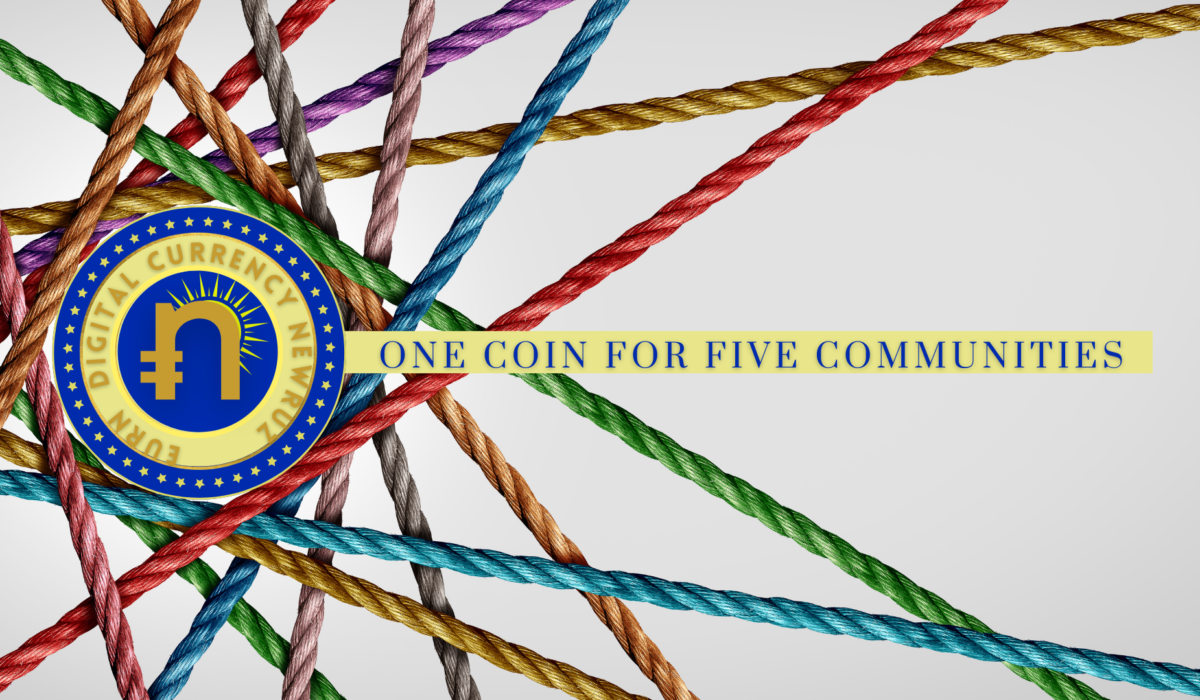
- 1 - Disclaimer.
- 2 - Project philosophy and principles.
- 3 - the introduction.
- 4 - Project goals.
- 5 - Project sections.
- 6 - Roadmap.
- 7 - Token information.
- 8 - Remaining release mechanism.
- 9 - Price control of the currency path.
- 10 -Project ownership.
- 11 -First class gold wallets.
- 12 -The second layer is silver wallets.
- 13 -Contributors and donors.
- 14 -Traded Pairs & Booking.
- 15 -Target markets.
- 16 - The smooth shift of the shape of the economy.
- 17 - What is the benefit and capabilities of digital governance for societies?
- 18 - Study the history of money and its types
- 19 -The Digital Revolution and New Values
- 20- Nowruz Community.
- 21 - Currency Community.
- 22 - Communty-Environmentalists.
- 23 - Immigration and asylum.
- 1 - Disclaimer.
The information, data, and technical ideas contained in this document or on the website are cultural and creative materials aimed at aggregating ideas and linking them together in a comprehensive and integrated manner, similar to the efficiency and organization of a beehive. The goal of this project is to provide a cohesive framework that contributes to developing new concepts and fostering creativity.
This document is considered a white paper for an initial project, reflecting the current reality and the handling of new tools, values, and concepts. It is important to note that a significant portion of the current work lacks regulations and organizational guidelines due to its focus on innovative generations. This absence of formal regulation allows for a broad space to support individual contributions and ideas in producing knowledge and enhancing innovation.
This document should not be interpreted as an invitation for investment or an offer of securities, whether local or international. It is not intended as a warning or disclaimer towards any entity or company. The content here is intended for cultural, creative, and discussion purposes, with our goal being to digitize and develop it for the benefit of the public.
Please note that the information in this document may be updated or changed over time.
Amendments
2020.07- 2021.09- 2023.01
Launch Date -2023.03-2023.10.10
- 2 - Project philosophy and principles
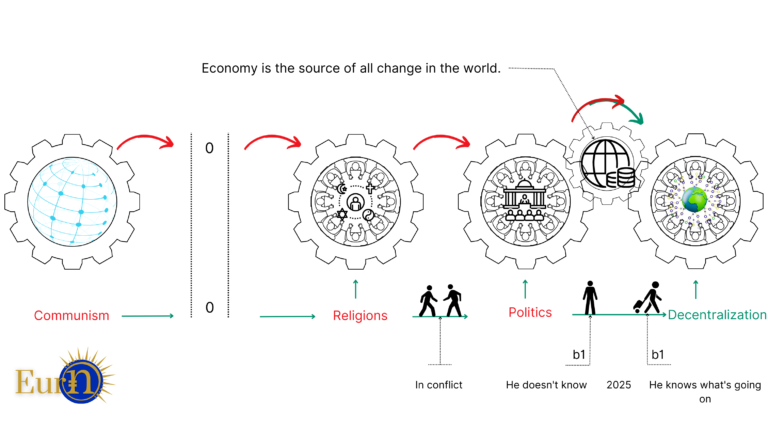
We, the Nowruz community, have been waiting for more than half a century for this transition—from traditional governance tools and contracts to the new era that is now unfolding. At a time when humanity faces increasing challenges, and traditional centralized systems struggle to adapt, the emergence of digital governance and currency represents a bold step toward a brighter, decentralized future that serves everyone without exclusion. It enables broader participation in duties and ensures a more comprehensive application of rights.
This project aims to announce our participation in this transition by building a bridge between the old world and the new future values, defining our place within it. After years of studying and following global research and discussions, we have built a vision rooted in transparency, justice, and sustainability. Through innovative technologies, the project seeks to empower individuals, enhance harmony among different communities, and enable a smooth transition to a new global system that meets everyone's aspirations.
What I want to emphasize here is that our team at the Nowruz Project, along with its currency, Eurn, which we launched four years ago and published its whitepaper and contract on September 19, 2021, consists of legal experts, technologists, researchers, and politicians who all share the project's core values. We are committed to making these values a reality while continuously evolving them.
Trust and Transparency
We believe that transparency is the foundation of trust among communities. Digital governance and currency have the ability to document and publicly display all transactions securely, ensuring everyone's commitment to shared rules. Our societies need such tools, as they will help rebuild trust among individuals.
Economic Justice
We reject all forms of exploitation that degrade human dignity, especially for those in need, such as refugees who are often targeted by deceptive pyramid schemes that capitalize on their vulnerability and limited knowledge of how projects are launched. To counter this, we will not engage in any direct listings or sales on platforms. Instead, our tokens will be distributed for free to promote equal access to economic opportunities for marginalized groups. The market and the people will determine its value freely. The same principle applies to support programs for regions affected by wars and natural disasters.
Integration and Inclusivity
We will work to develop an independent, comprehensive system for our project that supports individuals and communities across various sectors while aligning with the industry's core principles. Our services will be designed to ensure that no one is left behind, particularly marginalized groups. We will also focus on developing independent tools to reduce usage costs while maintaining high-quality services.
Decentralization and Autonomy
Decentralization is one of the most revolutionary and effective governance tools of the modern era. Our digital governance system is designed to empower individuals by enabling them to participate in decision-making without the dominance of centralized powers. It simplifies voting and opinion-sharing, ensuring accessibility and ease of use, especially when it comes to delegation and decision-making processes.
Sustainable Development
A shared digital space where scientific advancements and knowledge are continuously exchanged will contribute to the sustainability of both resources and the environment. We prioritize innovation while considering the impact of technology on the climate and societies.
Future Vision
We aspire to be among the leading communities adopting and pioneering Web3, artificial intelligence, and blockchain technologies. In a world where individuals and communities can interact freely within an organized framework, digital currency should reflect the spirit of the law, serving as a tool for achieving social consensus and driving innovation forward.
The project aims to serve as both an experiment and a launchpad—bridging old concepts with future values as seamlessly as possible. It relies on the adoption of widely accepted modern technologies to ensure stability and sustainable growth while respecting diverse backgrounds.
We are committed to implementing digital governance, providing mechanisms for collective and transparent decision-making, and prioritizing community support by allocating a portion of the currency's resources to humanitarian initiatives and social projects.
We also invite professionals and experts from various fields to engage with, join, and contribute to the project by sharing new ideas that enhance global cooperation. Our goal is to build a system that can adapt to different political and economic environments, fostering stability and integration.
We view digital currency and governance as an opportunity to reshape the fundamental rules and values upon which current systems operate. This is not just a tool for financial exchange or a means of removing intermediaries—it is a comprehensive system that strengthens both social and economic ties. It ensures a smooth transition to the future while preserving human values and protecting environments by enabling long-term sustainability.
- 3 - the introduction


The Nowruz project adopts the slogan (One currency for five communities in the world), thus achieving the first condition in the world of technology, software and the cryptocurrency industry, and one of the most important values it achieves is decentralization.
The second condition is adoption, as the Nowruz community can be considered the basic building block of the five pillars of the project. It is a nation of sixty million people and has a national day in common with 300 million people, along with other peoples in the world. UNESCO decided in 2010 to include Nowruz in the Model List of the Intangible Cultural Heritage of Humanity. The word Nowruz actually means the spring revolution and renewal that the world needs in all stages of change, which requires the young generation and creators all over the world to do so.
The third condition is the need and use from scratch of everything new in the industry of smart and digital applications and software, most notably digital governance in all fields, and studying and developing it on the ground towards more ethical standards with practical steps.
The fourth condition is the emotion and spiritual dimension shared with everyone, a history extending back thousands of years, a desire for change, and a long-term vision that seeks to implement it. It wants to add to human history an idea and a moral value in a strong currency that achieves benefit and common interests with everyone.
The fifth condition is respect and adherence to the safety of the environment and climate. This comes through a civilized contribution to adopting programs that serve the long-term immigration and asylum file and the ability to implement them, because the five rules share among themselves all the needs that the majority of people adopt, and it is a mistake to separate the two files, each one separately, in the matter of dealing with them.
- 4 -Project goals.

The most important step is to create a cohesive project community that has a need and goal for these applications and products, and to create a platform to attract everyone who has intelligence, creativity, education, investors, and liquidity flows to it.
The goal is to create a green and fair financial system that resembles Rare metal in that it is difficult to produce, preserves value, and carries more human and moral value, so that it does not expose human societies to the path of violence in every global financial crisis, through the following steps:
- Adoption and use
The project is considered a white paper for the Kurdish community if it achieves a high adoption rate.
We win a part of the currency community that will adopt it forever, no matter what changes occur and it is known to everyone. Thus, we guarantee permanent use and survival, and the element of emotion is very important.
2- Transparency
Loss of trust is a disastrous characteristic that comes from the absence of transparency and leads to the collapse of the individual and collective psyche. It harms everyone and also obscures you from benefit and presence in exchanging interests with others. People tend to see the processes, completed settlements, and previous actions in a clear and transparent manner and reach them without obstacles.
3- Spending
The ability to settle transactions quickly and securely, whether in the context of daily commercial exchanges, services, or family assistance, at a lower cost is everyone’s goal.
4- Growth and expansion
Growth comes through the large number of operations performed on the network and its use, and the continuous increase in the number of its participants, which generates income for it through the settlement tax and the distribution of profits to shareholders, and helps in the expansion of the project, either by building an independent network especially for the project or establishing partnerships with the rest of the networks.
5 - Creating a hospitable home with a picturesque and renewed nature for the youth community, the world of blockchain, digital creators, the Nowruz community, and the general public. There are many things in common, including No. 21.
- 5 - Project sections
- Token distributions
- Nowruz community 27.00 percent.
- All Cryptocurrencies 22.00 percent.
- Man and the environment15.04 percent.
- Refugees and expatriation 12.03 percent.
- Contributors 9.98 percent.
- Donations7.98percent.
- The currency difference is 4.99 percent.
- The owner of the project is 0.98 percent.
- Operation and access mechanism
- Remaining release mechanism
- Ownership distribution mechanism
- Public and private access
- Target markets
- Talking about the present and future
- Economy and smooth transition
- Values and concepts of the digital revolution
- Benefits of digital governance
- Building confidence
- Target communities
- Technology and Business World
- Crypto Society and Technology
- Nowruz community
- Man and the environment
- Refugees and expatriation

- 6 - Roadmap.

- 8 - Token information.
- Token Name
- Symbol
- Chain
- Contract
- Supply
- Decimal
- Owner address
- Creator address
- Is open source?
- Nowruz
- EURN
- TRC20
- THEv3iZ624miVqGXoi9fMDpgSzMsB1rjwN
- 350B
- 18
- TBznYU8ZNYgEc7GB7vZphqtFCzGBDkcDye
- TBznYU8ZNYgEc7GB7vZphqtFCzGBDkcDye
- Is open source

- Is honeypot?
- Can edit tax?
- Is anti whale?
- Can take back ownership?
- Is blacklisted?
- Is whitelisted?
- Is mintable?
- Is proxy contract?
- Can transfer pausable?
- Is Trading with CooldownTime?
- Security
- Security
- Security
- Security
- Security
- Security
- Security
- Security
- Security
- Security
- The main portfolios of the project.
- TBznYU8ZNYgEc7GB7vZphqtFCzGBDkcDye
- TCHJiMZk5QibxpEAyqB65RpNbNEHMRjGVM
- TM4XAQaaVHfvhbc5ecjMaG29UMrvYdVg7q
- TDK6ufpRdi6RQfi9H6D6gJz8mppX5w6MXg
- TBznYU8ZNYgEc7GB7vZphqtFCzGBDkcDye
- TSkxvtdCPf1BHC2C7uUrHVpaVj3qy7w9fu
- TUpgTX5mpAKYsHSxYXiAPbmy7tQdKrDPFA
- TLqaaYGFUt6qyadwnq4M8ds5oirHaLiLvb
- TBznYU8ZNYgEc7GB7vZphqtFCzGBDkcDye
- 7 - Remaining release mechanism.
- First Year 2023.10
- Second Year 2024.10
- Third Year 2025.10
- Fourth Year 2026.10
- 9 - Price control of the currency path.
- 0.0780
- 0.0480
- 0.0120
- 0.0050
- 0.0018
- 0.0009
To maintain the stability of the currency price and protect society from high volatility and also the decline in liquidity.

- 10 - Project ownership
The project owner owns the above mentioned percentage of 0.98% of the currency share, and also owns 1% with the project team and the same of the future revenues, and exercises the project management tasks directly, and has the right to assign sub-tasks and manage contracts with others without referring to anyone until the administrative body is formed and new laws are enacted and updated every four years thereafter.
The benefit of the project returns entirely to the owners of the gold and silver portfolios equally as shareholders, with the permanent owner percentage of 0.98% with the currency team percentage of 4.99% which is obtained through the internal terms and rules set to obtain one gold or silver portfolio for each person, in the size and all the assets that the project will own later.
The holder of the first contract owns the keys to access the next portfolio and has the freedom to act on the terms without any consideration for personal benefit, whatever its form before the request with the currency team.
1 - Donations share
2 - Shareholders share
3 - Currency team share
The currency team can carry out the tasks of general executive management and manage project affairs and develop the most appropriate plans for the progress of the institution and how to facilitate operation in the market and take fees from the currency team fund at a rate of 3.99% initially.
Own a percentage of the project profits after adjusting that percentage to the total members according to reviews and audits and taking into account the public interests of the project and putting it to a vote after consulting with the currency owner and the owners of the golden wallets only.
- 11 - First class gold wallets.
Private sale /project team.
One of the most important characteristics of the project is that its ownership is decentralized and does not belong to any specific party. An example of this is that the owner of the currency does not own a percentage of it that does not exceed 1 percent only. Likewise, the ownership percentage of the work team does not exceed only four percent, and together we get 4.99 percent and it can be obtained for everyone who He wishes to join according to the conditions, requirements, and type of sections agreed upon by the currency work team.
It is divided into 101 golden wallets, each of which constitutes a vote in the team’s board of directors and its decisions, with the exception of the project creator who has one seat and two votes to break a tie in the voting process if the result is equal. Also among the tasks of the team are the first and last responsible for the project’s workflow and success, developing plans and laws, and controlling pricing systems.
Also, each wallet must have at least the project token 175.5M, and it must be visible and registered in the group’s list so that the public can monitor it on its official website. It must also be frozen and not moved except when there is a need to move it after an effective vote by everyone. Otherwise, membership will be dropped. Ownership is automatic, and council members have the right to nominate a member to join from one of the owners of silver wallets exclusively for each member.
The conditions for acceptance of the golden wallets are subject to first through private sale and the agreement of the first joiners, regardless of their number, until the voting factor becomes effective at its beginning.
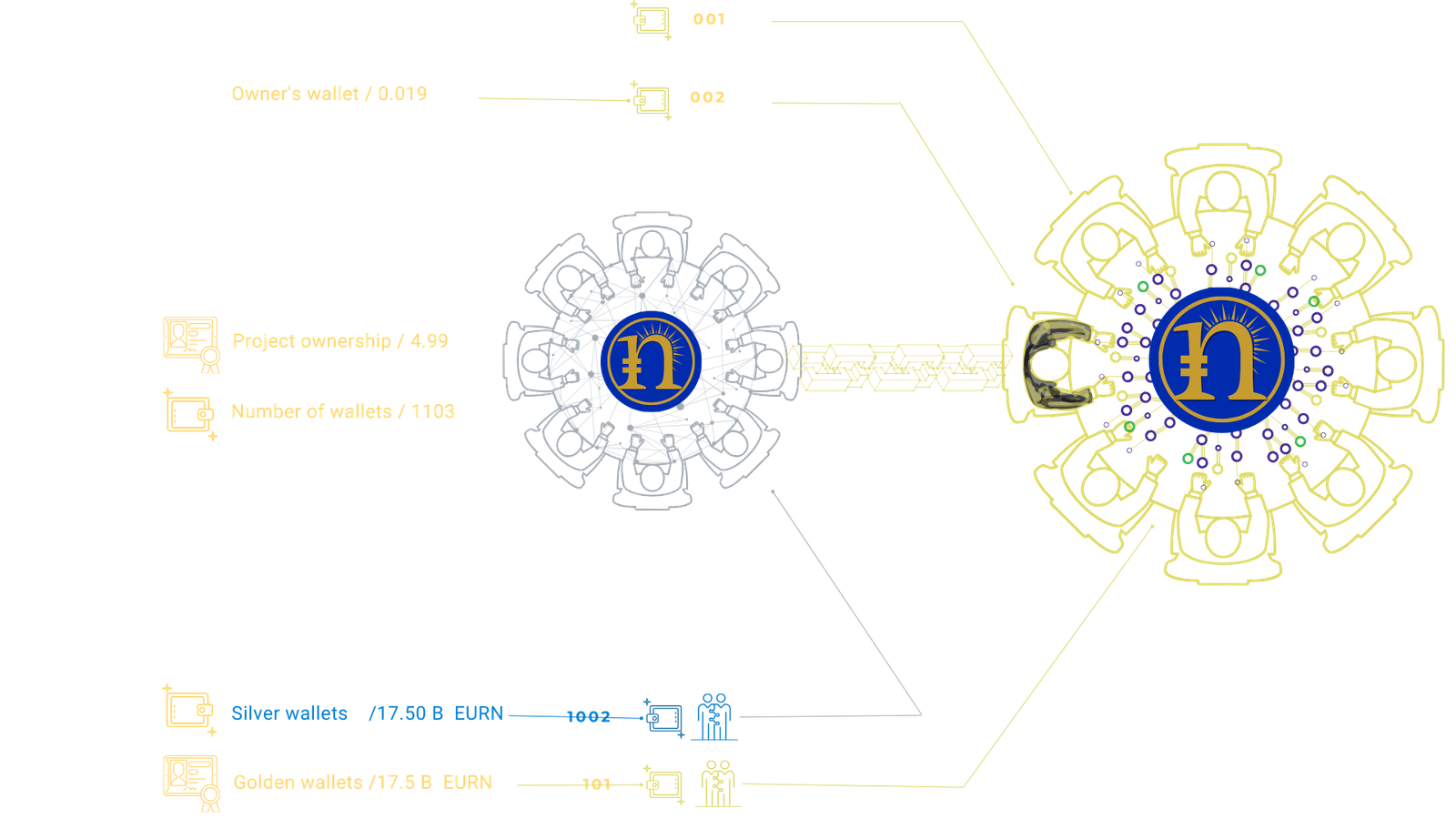
The Gold Wallet also has the right to nominate Silver Wallets for its work team, which number 10 or at least 5, subject to the conditions of the Silver Wallet rules. Likewise, a seat can be reserved for the Gold Wallet through the agreement of the holders of 5 Silver Wallets and above until the number is completed 11 and obtained through joint agreement and facilities between them.
All golden wallets receive a fixed percentage of the full currency team of ownership and a similar percentage of the project’s profits and revenues when it expands and its ability to provide services later, varying from operating profits. Its mission is to maintain deposits and the project’s credibility.
It is not possible to change the organizational structure of the project and make amendments except every four years, through a vote by the Council.
All wallets are subject to accountability and transparency to the token community. Their addresses are present in a list on the official website of the project, and the mention of the institution or its owner is unconditional to the public, but internally it is obligatory to be subject to legal matters.
- 0001@nowruz-eurn.com
- 12 - The second layer is silver wallets.
It is also useful to leave space for ambitious people to be gradually trained and qualified to experiment with projects whose ownership is decentralized and does not belong to any specific party. And until the base of participation and joining grows, experiences flow, and services diversify later. We distributed this percentage in decision-making and expanding the ownership base to help the first team, and it has an equal percentage of revenues and ownership to the work team as well, 4.99 percent, and it can be obtained from anyone from the public who wishes through decentralized platforms.
It is divided into 1,002 silver wallets, each of which constitutes a vote in the team’s board of directors and its decisions. The board manager is excluded from this and is exclusively the owner of a gold wallet. He has one seat without a vote. He does not vote in the voting process except in the absence of one of the votes and not abstention and the result is equal. Only he is allowed to vote. Among the tasks of the second team is responsibility, participation, studying the progress of the project, monitoring it and its success, and developing plans and laws, with the owner of the golden wallet to which it belongs.
Also, each wallet must contain at least the project code 17.5 million, locked for at least 6 months, and must be visible and registered by one of the owners of the gold wallets in the group list so that the public can also monitor them and which group they belong to. The addresses of the wallets are placed on Official website. It should also be frozen and not moved except when there is a need to move it after an effective vote by everyone. Otherwise, membership will be revoked. Ownership is automatic, so a member is nominated to join after the approval of the group administrator.
The conditions for accepting silver wallets are first subject to public sale, and anyone wishing to join can obtain the approval of the first joiners or those who announce their need for new ones for each group, the minimum of which is 5, or wait when one of them comes out and take it directly according to his order in his waiting list, until the voting factor becomes effective among the group or the administrator. About them.
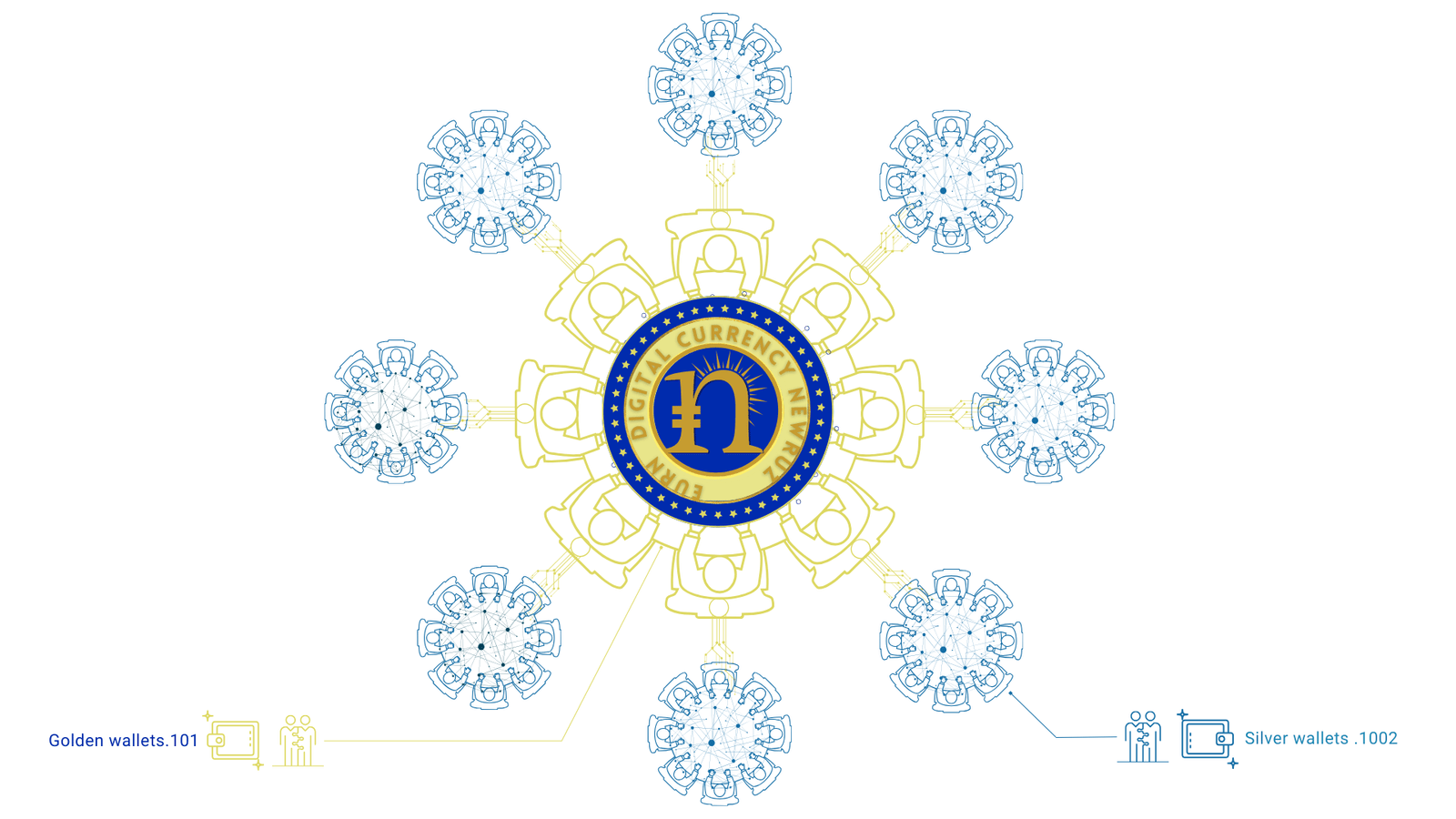
It is very useful that the cryptocurrency market is not affected because of the legal problems of stablecoins and the news spreads here and there because of its association with deposits deposited in banks that link the value of the currency and the destination of a country or the institution or any third party and always expose the market to shocks and undermine the process of trust with it on the one hand.
The second aspect is not to leave an opportunity for special groups and work for them to take responsibility on his shoulders and control the course of trends and price systems for them, whether negatively or positively, and often reaps the greatest benefit for a group at the expense of others by providing support sometimes for certain projects and nominating them intentionally or unintentionally, killing the spirit of justice and democracy in people's choices.
Rather, our stable currency must also take on a decentralized character emanating from the society itself this time and create a spirit of enthusiasm and competitiveness among them by presenting new values that are created in a human way.
- 0002@nowruz-eurn.com
- 13 - Contributors and donors.
We have created public digital wallets for each individual token, in order to show the community that supports us the most and create a spirit of generosity and show it to everyone.
All of them are placed as deposits for the project that are not used except when needed to move them in cooperation with third parties specialized in the field of security and preservation of digital currencies.
Traders, investors, the digital currency community and investors, whether they contribute large or small capital, have a special advantage and ability, because they often study and analyze projects before entering them, and their decisions are very important and affect the success rate of these. projects, and may delay the period of success of any project.
I remember five years ago, most of us did not know or own cryptocurrency, or believed in it, but there were those who saw it as just an incredible absurdity, but as time went on, a lot of crypto-based projects and applications appeared, flourished and expanded.
However, she did not take her deserved and deserved place in many circles. The media and social networking sites did not play their role in defining their function and our need for them to encourage people to access them, especially young people.
But over time, people started to learn more about this technology and started to build up a deep knowledge base, understanding and understanding of this industry. Through continuous research and various projects, they have a say and the ability to influence through content makers and discussions about project types and uses through practical experiences.
In conclusion, the cryptocurrency community, whether we like it or not, is credited with raising awareness and spreading a culture of thinking among a wide segment of ordinary people of the concept of economics, defining production markets and their owners, and the ability to use analysis, monitoring and implementation tools, and the financial and securities markets have benefited from them. Finance in the past decade and helped the technology sector to accelerate its progress and growth through financial flows.
It also contributed to the provision of specialized and trained competencies, which will contribute to developing an integrated plan for them to obtain the currency and give them the greatest possible benefit as a reward and thanks.
The obligation to return the values ends after a full year because six months is sufficient for all donors to claim compensation.
- -Nowruz Community 27.00 percent
- -Donations 7.98 percent
Donations are made in the form of payments in the sector of services and necessary community infrastructure and in the event of natural disasters such as hurricanes, earthquakes, etc. for humanitarian purposes when urgent programs are available after a joint study agreed upon through channels that have legal compliance, such as food, health and education programs as well, including reconstruction and always a priority for refugees.
In order to ensure the sustainability of liquidity flow to the project’s donation fund, a tax of 0.22% is imposed on each owner of a gold portfolio when transferring it from one entity to another, and 0.02% for silver.
- -Self-freezing 10.00 percent
This is done through a group of wallets from the two categories, one of the conditions for owning a share in the project is to permanently freeze the amount of tokens allocated to each of them.
The project is equally owned by the two types of investors.
- 14 - Traded Pairs & Booking.
Regarding the traded pairs, it is preferable to name and evaluate a token against a token from the same industry, for example btc/eurn, trx/eurn, eth/eurn .
- 15 - Target markets.
At each stage in a thoughtful and organized manner.
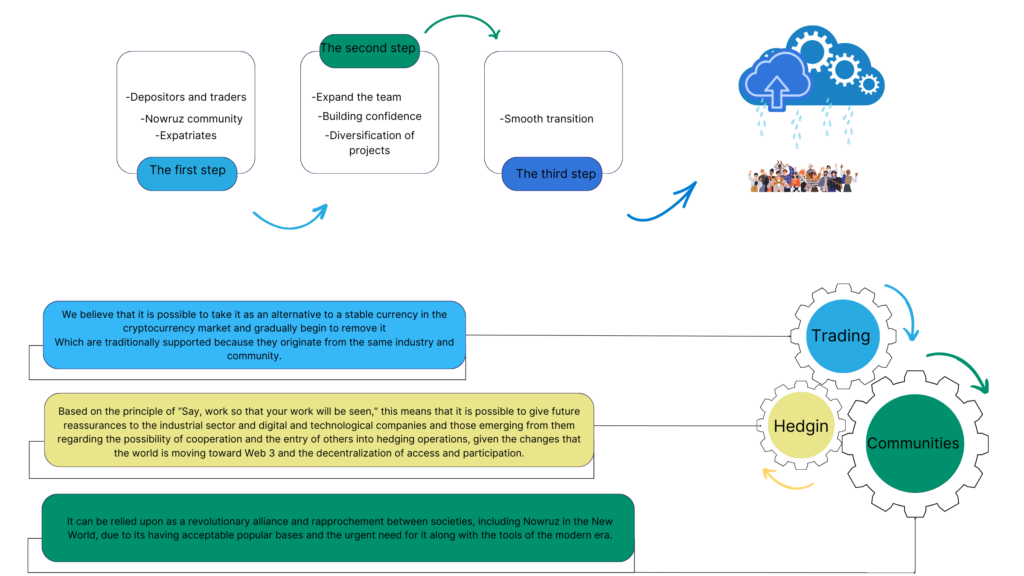
- 16 -The smooth shift of the shape of the economy


In every pivotal transitional historical stage of man, it took the hierarchical form of relationships in solutions, organization and legislation from top to bottom. The essence of the project speaks of (smooth transition in economic values) and creating a roadmap for the participatory process for which everyone is responsible.
First - Knowing what is happening
Second - The time of arrangements and major changes in the world when crises and disasters increase and what is the required readiness
Third - Due to the sensitivity of the urgent entitlement, we must address all aspects and discuss them in one complete picture to highlight the importance of the project and work on it.
The Norooz Project is considered a white paper and a report together, which was on a mission to search for formulating a comprehensive economic project that would be a practical starting point for us to get out of our current history and the state of failure, helplessness and division that we live in and that all people suffer from at a time when the discourse of hatred and hostility towards everything that is different has intensified, which has caused this damage from more than one party. It was the result of programs and discourse of institutions, whether political, religious, intellectual or social, or illusions mixed between the old and the modern, through which they were able to rule human groups throughout the ages and systematically enslave their bodies.
In the past, countries, societies and civilizations were geographically distant, closed in on themselves, and had a special nature in everything, even the economic pattern and transactions. Therefore, they were established and continued for several centuries or long decades, and their collapse did not appear until they were exposed to external destruction, mostly, and their erasure, or after several long decades of their collapse. As for the internal factors, they were very rare because man was on a journey of exploration of himself and his surroundings, seeking to understand it and also the extent of the limits of his capabilities and develop them. Most of his interest was the cycle of survival and the meaning of his existence and work.
Everything around us has developed and accelerated more when the industrial and agricultural revolution began, when a process of progress occurred in science, including logic and mathematics, at the expense of others, giving people broader powers to grow, prosper and move, and the most important factor was experiences. The financial, banking and intellectual sector was the hidden regulator behind that regulatory process for the legislative and executive authorities together, which determines the limits of what is possible and impossible for any social entity existing in any geographical spot in the world. This led, for the first time in human history after World War II, to the formation of central international institutions that include all countries and multiple identities under the umbrella of law and duties. It is true that there was no application and full agreement on common concepts and values, but the factor of interests and trade agreements, as well as the need for peace, played a role in developing and continuing them, and the opposite of that was a growth process for societies and countries after engaging in the regulatory process of nations. Each entity had geographical borders, sovereignty and an independent voice on the surface, and a portfolio containing a ledger for its movement and actions and measuring its activity, whether in the economy, law and security, and even in the field of human rights and freedoms, it became more diverse.
With the technological and digital revolution, we are witnessing a boom in creativity and intelligence in the field of information, data and its preservation, and we have come to possess more accurate tools in the process of detection and analysis. With our entry into expanded globalization, the public space has become open, enabling everyone to receive information and also appear to everyone. All old and modern problems have come to the surface together, and the portfolios of institutions and countries have become intertwined with each other through the abundance of conflicts, humanitarian crises and environmental disasters, the loss of respect for international and humanitarian law and its application, and some people have gone beyond excluding societies and individuals, and even nibbling away at other members. It is assumed that everyone is in an integrated cycle for a set of understandings that everyone has signed, and the terms of the open market, free trade and its rules, the market economy, and so on have been disrupted, and the theory of economics has remained perforated, and man has not yet reached a final fixed rule.
This imbalance led to a general economic, political and cultural mood reversal that threatens the structure of people and their urban distribution and their common interests that they have become accustomed to in the journey of integration of the year, which was gradually trained on. The rift that occurred in the difference in visions, concepts and scattered beliefs, and we must not forget the absence of justice in resolving disputes, created new private entities and institutions for those official entities responsible and organized, and they also adopted the party participating in bearing responsibility, some of which play a mediating role in implementing the law, and some of which are security and economic, so government tools fell into the hands of a small number of parties that benefit at the expense of the majority. This happened as a result of the process of advancing the percentage of intelligence, creativity and ability of individuals and institutions and a surplus in private production to generate new jobs at the expense of the old classical administration, so we have an increase in burdens and administrative spending and many parties adopting the burden of responsibility for individuals, controlling the policies of issuing values, money, goods and rules. Now, an economic or security crisis is enough to bring down governments and countries and collapse within days or months because people have come to possess more efficient tools for coordination and independence in decision-making and voting in determining their fate or Their interests and speed in reaching them, and because the type of desires has become diverse and different as well.
In short, the world is going through the throes of change in terms of central rules and concepts. While the tools and desires of individuals and the limits of their capabilities have developed, with a difference in the type of needs for decentralization as well, this requires us to move directly to a discussion of digital governance and how to benefit from it to put in place the tools that need to be understood and changed. In my opinion, we should study the history of money and the source of automatic contracts that all people agree upon in order to move with practical steps. Perhaps we will discover a new unit of measurement for value that everyone agrees upon.on.
- 17 -What is the benefit and capabilities of digital governance for societies?
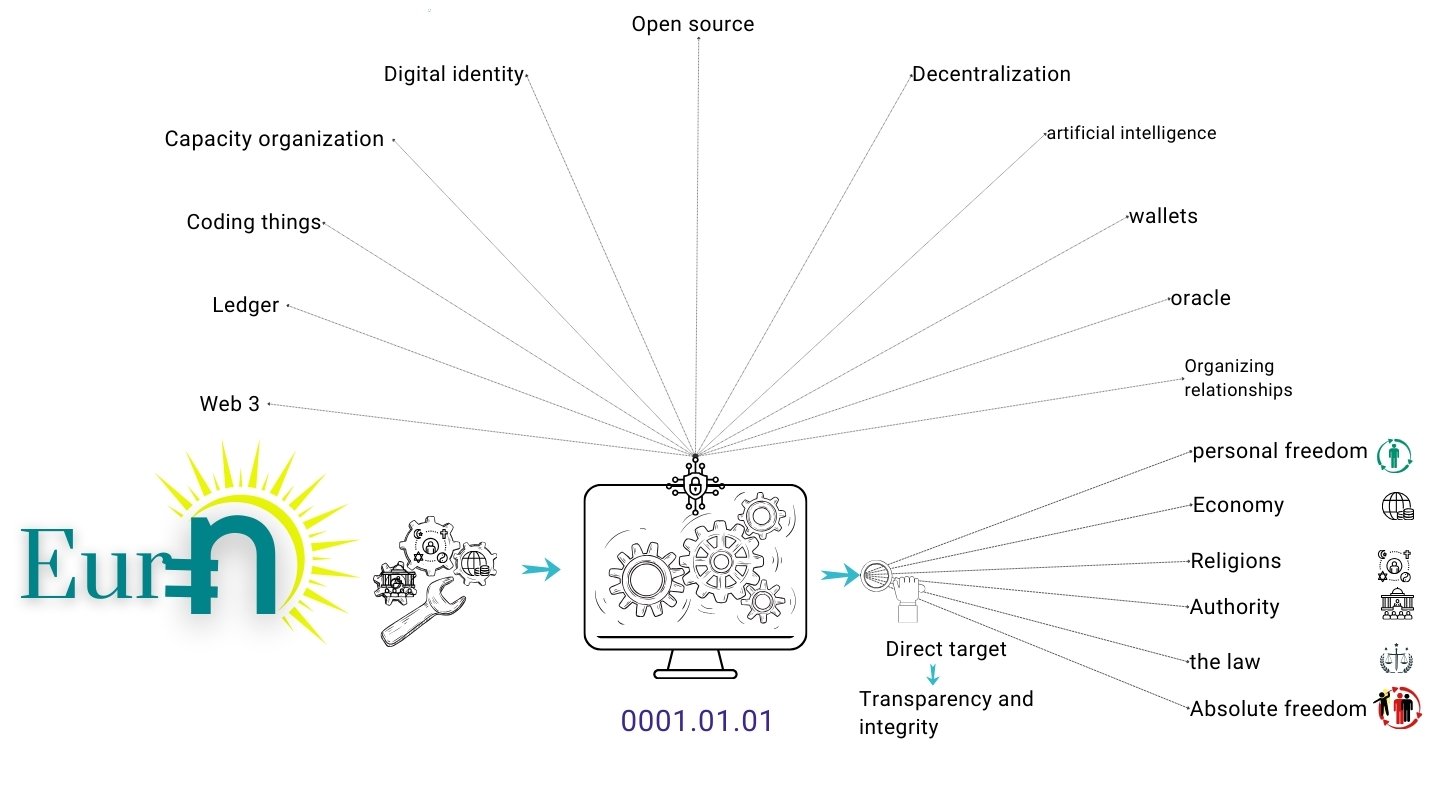
In a world characterized by rapid technological advancement, digital governance has become not just a means of organizing daily life, but a competitive arena between official governments and major global corporations. These entities take emerging challenges very seriously, while individuals, who are the weakest link in this chain, are the crucial factor in determining the future path. Digital awareness among individuals has become more important than ever, as their decisions can be the deciding factor between "yes" and "no" in shaping the digital future.
The decisions individuals make at this stage not only affect their present but will also become unwritten laws binding them and future generations. Over time, these decisions evolve into practical practices and traditions that are automatically ingrained in societies. Therefore, every choice an individual makes today forms part of the legal framework that will govern future digital and social relations.
In this context, digital governance transcends traditional systems. It represents a new digital sovereignty that seeks to provide a fair and inclusive technological environment, giving individuals the power to control their digital destiny. With multinational corporations dominating digital infrastructure, individuals need a deeper understanding of the technology they rely on and how this technology can shift from a tool of exploitation to a means of empowerment.
We live in an era of accelerating events and challenges, highlighting the importance of balancing personal and societal interests. The decisions individuals make today regarding digital governance will determine whether they retain the ability to shape their destiny or succumb to larger forces seeking to control their communities. Amidst all this, the significance of artificial intelligence, decentralization, and digital identity emerges as key tools in promoting democracy and freedom.
Digital governance is not merely an organizational process; it is a transformative force that requires deep awareness and understanding from individuals. Recognizing and acting on this truth not only contributes to immediate success but also lays the foundation for a more sustainable and just future. We are living in a historical moment where "digital decision-making" is the new law that will govern the future, and our journey towards achieving this goal begins today.
f tangible national organization and cooperation across continents if people realize this before it's too late.
- 18 - Study the history of money and its types

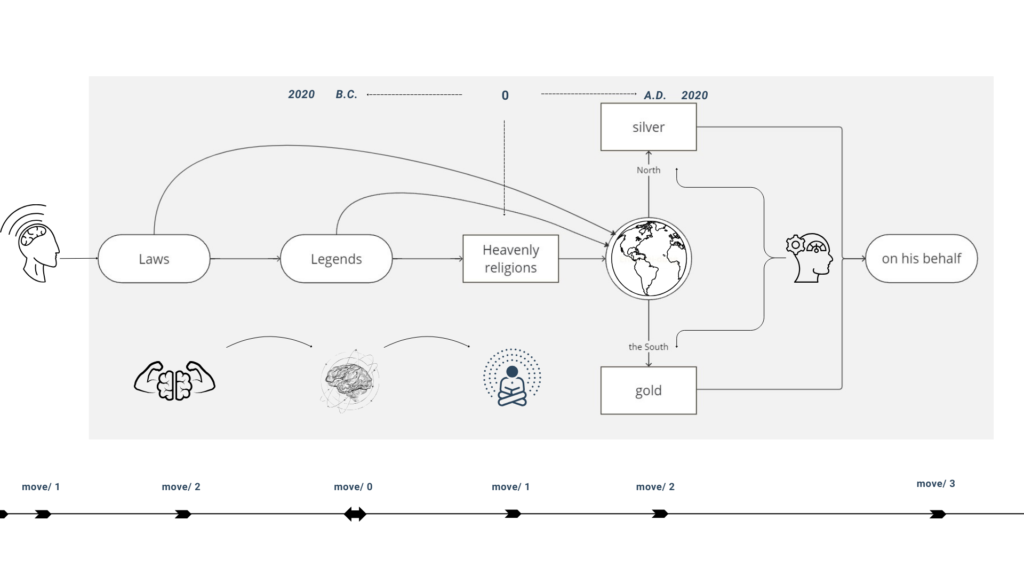
In order to reach a new correct vision, we must understand and study the behavior of people, both ancient and modern, and what tools were used as a unit of measurement for value. In this paragraph, we will provide a brief explanation of the stages of the development of currency or money and the transactions that were settled throughout history, and even study the ancient origins and the validity of contracts.
Logically, we can say that ancient societies were common in terms of what they wanted to reach from needs, and they depended in commercial exchanges on the barter of goods if what they needed was with someone else, where people exchanged goods and services with each other, and it seems that it is clear that later there was proliferation among humans and that the barter system was no longer useful, inflexible, ideal or effective.
1- According to the studies available so far, commercial dealings with gold and metal bonds appeared as a result and solution to the problems of the commons stage directly to exchange goods and they considered it the first generation of the financial system, but were the ancient Greeks the first to use them as metal currencies in 550 BC, while the Sumerians and Pharaohs used them as a tool, antiques and valuable possessions more than 6000 years before the date of their discovery? Everyone, ancient and modern, was renewing the agreement on the concept of gold as a source of value because humans failed every time to move to the alternative for several reasons: First, because its quantity is limited, i.e. the scarcity factor, and new copies cannot be generated, and if it happens, it is fair in exchange for the effort expended due to the difficulty of mining it, and second, because of its physical properties and beauty, and third, religions also failed to have any modification or to introduce a standard and unit of measurement for value of their own, and over time, it gained more reliability until it was called the money of God
2- Then came the appearance of money and the printing of banknotes, which derived their value from the value of the assets and precious metals themselves. Later, other strategic goods were added in limited proportions with the rest to facilitate the movement of people and markets, which is considered the second generation, as Jack Weatherford divided it and considered it as the first manifestations of the open market economy and as a modern cultural economic system. It also failed after passing at least the third and fourth generations of societies or more for many countries.
3- Electronic money is the third generation of money, and it appeared in our current era, and it also brought about the same revolutionary and wide-ranging social changes that the two previous monetary revolutions brought about. But the new money has now changed many of the negative things around us and has begun to appear on the surface, the most important of which is a decline in production, a defect in the political system, and the absence of security and peace, which led to a major preparation in the files of immigration, asylum, and the environment. It also affected the organization of business and trade exchanges and the nature of the class structure of societies and individuals.
Here I differentiate between electronic or digital currency and encrypted digital currency, because the former is the same as the financial balance recorded electronically on a network of computers connected to each other for a value or financial balance on a card or other device for a value that previously existed and is known and agreed upon by everyone.
4- Now we have cryptocurrencies except for the stable ones in the last two decades, they are new and may belong to the fourth generation, and they are still in the formation and spread stage, and have not yet obtained legal download in most countries due to their lack of several things, the most important of which is legal legislation and the current social contract for the global economic and financial form between all its members and international organizations. These institutions have not been updated with a new system, tools and values such as cryptocurrencies and blockchain derivatives, and so far no party or community from outside them has come forward as a contributor to the organization
- 19-The Digital Revolution and New Values

We live in an era of digital revolution, where technological tools are evolving at an accelerating pace that contributes to the production of knowledge, the enhancement of intelligence, and the improvement of the quality of life on a global scale. What distinguishes this revolution is that technology has become available to everyone in an unprecedented way, which promotes new values centered around justice and equality in access to knowledge and information.
In the modern digital context, let’s go first to justice. Justice is made possible by tools that ensure transparency and accountability. Thanks to the development of technologies such as blockchain, transactions can now be permanently and securely documented, reducing the chances of corruption and enhancing trust between individuals and institutions.
As for equality, diversity of options and ease of access, the digital revolution has not only been limited to justice, but has also launched a new wave of equality by providing opportunities for all. Today, students in remote areas can benefit from online education, and people with special needs can access job opportunities thanks to assistive technology tools.
As technology shapes our lives and influences our values, we now see that it has gone beyond its role as a tool for knowledge and has begun to deeply influence our values and daily behaviors. With the increasing reliance on artificial intelligence, we have decisions being made based on digital analysis, which reshapes our social relationships and even the ways we think.
Let me confess here to the reader that I will talk about my admiration and directing all my capabilities and interests to this field, which are the new values that this revolution carries from transparency, openness, and changing work ethics, the most important of which is monopoly. This is a new moral value for humans and a great achievement for knowledge to be an open source so that it is easy for others to reach what others have reached, and also they can start from the point that others have reached and develop it to present it new every time to others. For example, digital has not only changed the way work is done, but also the values that govern it. In the past, administrative decisions were made behind closed doors, but today, open digital systems such as cloud systems allow monitoring operations with greater transparency, and there are countless examples around us.
Let's not forget that we are currently facing a set of old problems and challenges in the era of modern technology today. Despite the opportunities that technology provides, some traditional challenges still exist. Wars, migration, and environmental destruction are problems that have accompanied humanity since ancient times. I will not branch out into them much so that they will be more useful on the page that deals with the file of migration and the environment and highlights the aspects that can create common interests and values with others. Technology can provide new solutions to deal with these challenges, but they still face resistance from old inherited systems that have not yet adapted to this digital reality.There are living examples of the effectiveness of these tools, starting with the earthquake that struck Morocco, Turkey and parts of Syria. In the Syrian refugee crisis, the United Nations used blockchain technology to distribute aid faster and more effectively, as it was able to deliver food aid to more than 100,000 refugees directly without the need for intermediaries.
The digital revolution is not just a technological development; it is a complete reshaping of the values and concepts that societies have lived for centuries. As these new values such as transparency, openness and equality emerge, we must adapt to this transformation and ensure that technology is a tool for human progress, not just a means of reproducing old challenges.
- 20 - Nowruz Community
Nowruz: A Celebration of Renewal and the Return of Spring
Nowruz, which means “new day” or “new beginning,” falls on March 21 each year. This day is a symbol of renewal and the beginning of new life after the end of winter. Nowruz is celebrated by a wide range of cultures and societies spread across various regions throughout history. These traditions have extended from the ancient peoples of Western Asia, northern Mesopotamia, to southeastern Anatolia, forming a link between different civilizations.
Nowruz goes beyond being a traditional celebration to become a global symbol of renewal and fertility, as the traditions of this holiday are passed down from generation to generation through folk stories, folk songs, and ancient proverbs. Although the rituals of celebration differ between different societies, everyone agrees that it is a holiday that indicates a new cycle of life, and a new phase of hope and energy.
Over time, Nowruz has been linked to ancient trade routes such as the Silk Road, making it a holiday that moves between peoples and cultures, enhancing the spirit of communication and exchange between civilizations. The traditions of Nowruz are part of the cultural heritage that many people still cherish today. Nowruz was listed as an Intangible Cultural Heritage of Humanity by UNESCO in 2010, due to its great cultural and human symbolism.
Nowruz is characterized by a decentralized nature, as its people celebrate it in different countries of the world. This widespread distribution gives Nowruz a unique ability to weave strong relationships and an effective presence, whether economically, socially or culturally. It has become more than just a local celebration, but rather a global phenomenon that contributes to strengthening ties between different peoples and exchanging ideas and experiences.
Among the most famous rituals associated with Nowruz is the preparation of a special table known as “Nowruz in the Seven”, which is a table containing seven symbols that begin with the letter S, such as apples, vinegar, sweets, and others, each of which carries a specific meaning related to fertility and abundance. In addition, folkloric characters such as “Hajj Firouz”, a character dressed in red and dyed black, appear in the celebrations and chant folk poems in celebration of the holiday.
Nowruz is not just a national or religious celebration; it is a symbol of renewal and hope celebrated by people from all backgrounds. Whether celebrated in rural areas or large cities, Nowruz remains a much-anticipated event, a time to renew one’s bond with nature and celebrate the arrival of spring.
Culturally, Nowruz is an important part of the heritage of many peoples, expressing the rich traditions of folklore and folktales that have been passed down through generations. These stories include tales of nature and everyday life, and of heroes and mythical creatures that represent the power of renewal and victory over the harshness of winter.
Nowruz is not just a holiday; it is a symbol of renewal and human solidarity, as people come together on this day to celebrate the new cycle of life and the hope that comes with spring. These values have made Nowruz a global symbol celebrated by an estimated 300 to 500 million people around the world. This large number is evidence of the importance of Nowruz as a common factor that unites many different societies. When common values and interests converge between these communities and other groups, Nowruz can be a cornerstone of cooperation and solidarity among them.
Over time, Nowruz has become more than just a seasonal celebration, but rather a social and cultural force that continues to unite people across borders and time, becoming an enduring symbol of renewal, communication, and human solidarity.
- 21 - Currency Community
In the current digital revolution, cryptocurrencies and blockchain have become one of the most important factors shaping the global economic landscape. As individuals and institutions increasingly become interested in this technology, the number of users on the largest cryptocurrency exchanges has exceeded numbers that can be accurately measured. For example, more than 260 million users and accreditors are gathered on platforms such as Binance and Coinbase, reflecting the size of the economic power that this community represents.
This widespread presence is not just a number, but a strong indication of the impact of cryptocurrencies on the global economy. The large volume of daily transactions, which reaches tens of billions of dollars, indicates the strength of the market they represent. This massive presence enhances the status of cryptocurrencies as a major axis in the global financial system, contributing to the transformation of traditional economic operations towards digital ones.
The increasing interest of major companies and investment institutions in cryptocurrencies and exchange-traded funds (ETFs) also reflects this tremendous shift. We have witnessed the entry of several ETFs into the markets, with huge investments that reflect the great confidence in the future of these digital assets. Thus, this digital community constitutes a growing economic force, adding a new dimension to investment and trade, and emphasizing the importance of continued innovation and expansion in this field.
1. Recent data on trading platforms:
Binance:
Number of users: Over 150 million registered users (recent estimates from 2024).
Daily trading volume: About $45 billion.
Coinbase:
Number of users: About 110 million verified registrants.
Trading volume: About $150 billion per quarter.
Prevalence in China and India:
The number of users in China and India is estimated at 120 million.
2. Expansion in Arab countries:
Increased use: The last three years have witnessed a significant increase in the use of digital currencies in the Gulf countries, northern Syria, and Iraq, especially after the Corona pandemic due to the decline in the value of local currencies.
3. Market growth and recovery:
Number of projects: More than 2,300 projects listed on CoinMarketCap.
Market size: Ranges between $1.5 trillion and $2 trillion.
4.Note here this modification is taken from ChatGPT on 09-12-2024. Please review and verify.
Investment funds (ETFs) and digital currencies:
Developed markets:
The United States: witnessed the entry of several ETFs related to digital currencies such as ProShares Bitcoin Strategy ETF and Valkyrie Bitcoin Strategy ETF, with remarkable results after their launch.
Canada: Canada launched its first ETF for digital currencies in 2021, such as Purpose Bitcoin ETF and Evolve Bitcoin ETF, which attracted significant investments.
Growth and innovation:
Different types: ETFs now available include funds that track specific digital currencies such as Bitcoin and Ethereum, in addition to funds that track a diverse basket of digital currencies.
Rapid Growth: Cryptocurrency ETFs have seen huge investment inflows, with large institutions and individuals investing in these funds as a way to access cryptocurrencies in a regulated and secure manner.Challenges and Regulation:
Regulation: Cryptocurrency ETFs face regulatory challenges in many countries, leading to delays in approvals and the establishment of appropriate laws.
Volatility: As with cryptocurrencies, ETFs face significant price fluctuations, requiring
Which requires investors to be careful and understand the risks associated.
5. Adoption of digital currencies by companies:Electronic application and gaming companies: were among the first adopters of digital currencies.
Traditional companies: such as Burger King, Starbucks, and some retail companies have also begun to adopt digital currencies.
Electronic banks: have begun to integrate digital currencies into their systems, such as PayPal, which has integrated digital currencies into user accounts, with about 355 million active accounts and a transaction volume exceeding 250 billion
- 22- Communty-Environmentalists.
I will not delve into the details of climate change, as there are governmental, international and civil institutions and organizations that have the expertise and ability to monitor and analyze the global situation. Climate change is a complex issue that affects all countries and societies. Recent scientific studies and reports indicate that human activity plays a role in some aspects of these changes, which include increasing temperatures, stronger winds, floods, and increased salinity in oceans and seas. In addition, droughts are not limited to desert environments only, but also include areas such as the Amazon and northern Europe.
The experience of Australia, which has worked for more than a century in cooperation with international organizations to address climate change, demonstrates the difficulty of addressing these phenomena, even with geographic and political stability. This highlights that addressing the effects of climate change will be more challenging for other countries. In addition to drought and rising temperatures, climate change also includes cold waves and high floods that lead to humanitarian disasters and famines that threaten food security, and contribute to the exacerbation of displacement and violence, especially in North Africa, the eastern Mediterranean Basin and the Middle East.
Edit from 2021 - Now at the end of 2024 I think some of the content of the page has appeared so we need to watch some communities that take the issue of environmental and economic change seriously and think about it
The Importance of Nowruz in Environmental Conservation
The Nowruz community, estimated to number around 300 million people around the world, represents an important model in environmental conservation. This community is keen to practice traditions related to the environment, including their celebrations of the Nowruz Festival, which promotes the values of nature conservation and sustainability. Nowruz, which is celebrated on the first day of spring, is known for its focus on the balance between humans and nature. The traditions of celebrating this occasion include planting trees and cleaning natural environments, reflecting the community’s commitment to environmental sustainability.
In addition, Nowruz encourages environmental practices by promoting the local culture of preserving natural resources and reducing environmental impact. This trend is a model that can help inspire other communities to adopt sustainable environmental practices.
Digital governance and technology are essential tools in providing effective solutions to contemporary challenges, including climate change and migration. Among the prominent benefits provided by digital governance and technology, decentralized finance is one of the most prominent of these benefits:
Also in improving transparency through the use of blockchain technology and smart contracts, which allows for tracking and distributing resources more accurately and efficiently. This enhances the ability of governments and institutions to effectively direct environmental financing and projects, helping to address the impacts of climate change.
Decentralized finance also provides a new mechanism for collecting and distributing financial resources for environmental projects through digital platforms. This system allows investors and contributors to directly participate in supporting climate initiatives, which enhances transparency and reduces the costs associated with traditional mediation, and increases the speed and efficiency of financing allocated to climate change adaptation projects.
Digital governance provides tools to improve access to environmental information and data. This data can be used to analyze climate change and inform adaptation and mitigation strategies, helping to enhance the effectiveness of environmental measures.
Digital technology encourages innovation by providing new tools to develop innovative environmental solutions. This technology enhances collaboration between governments, businesses, and NGOs, contributing to the development of more effective strategies to address climate change.
Digital governance enables greater inclusiveness by involving local communities in decision-making processes related to environmental projects. This provides greater citizen engagement in climate efforts, leading to solutions that are in line with their needs and aspirations.
Addressing climate change and migration requires a comprehensive and humane response, supported by digital governance and technology. In addition, cultural initiatives such as those promoted by the Nowruz community contribute to global environmental efforts. By integrating cultural strategies and traditions into our response to environmental challenges, we can promote transparency, efficiency, and innovation, and have a positive impact on the environment and communities.
- 23- Immigration and asylum.
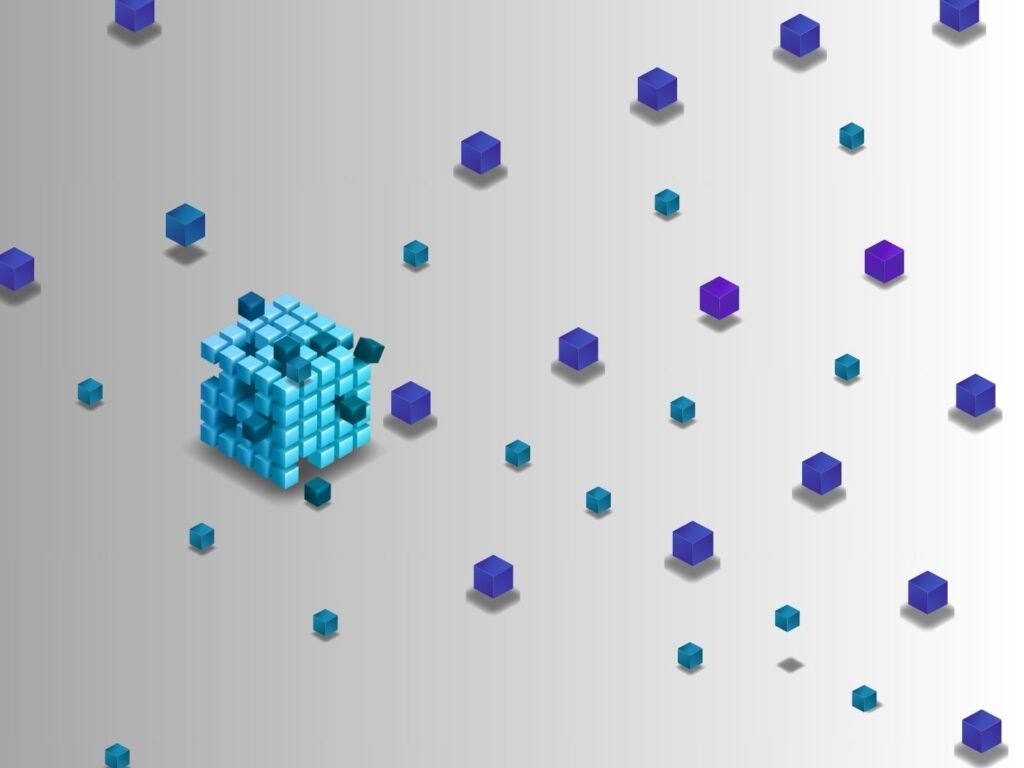
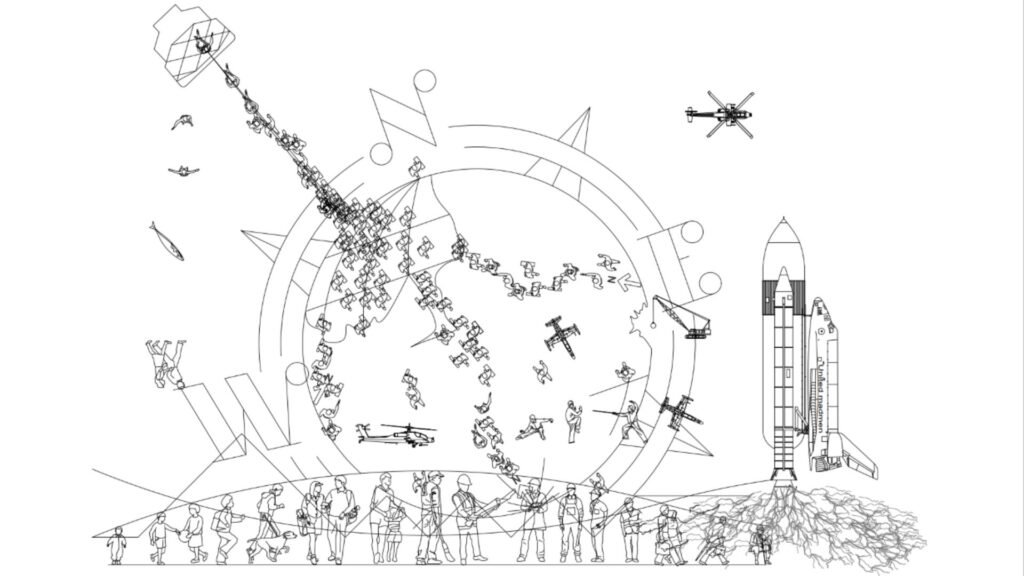
Migration and asylum issues are among the most prominent issues facing human civilization in the twentieth and twenty-first centuries. According to the 1951 United Nations report, which set a framework for addressing the refugee problem, a refugee is defined as “a person who has no homeland and is a victim of events for which he is not responsible.” The book “Psychoanalysis of Migration and Exile” by Greenberg indicates that migration is rooted in myths and religions, as the first migrations were associated with the curiosity of Adam and Eve who were expelled from Paradise as punishment for their disobedience. The Prophet Abraham was also forced to leave his city of Ur and his tribe, while the Prophet Moses and his people were called Hebrews because of their migration from Egypt across the Red Sea to Judea and Samaria. In modern times, our region has witnessed massive waves of migration, starting with the Lebanese migration that followed the Lebanese war and included more than 50% of the Lebanese people, and ending with the great Syrian migration after 2011, which included about six million Syrians. This phenomenon makes it difficult to find an Arab or foreign city free of migrants and refugees. However, the topics of migration and exile have not taken their proper place in Arab studies and writings, despite the great influence of Arab expatriates and exiles in countries around the world.
Migration and asylum are often closely related to the environment, as climate change directly affects these phenomena. Climate change, such as increasing temperatures, frequent floods, and droughts, can lead to the loss of arable land and the displacement of local communities from their areas of origin. In many cases, people fleeing natural disasters or harsh environmental conditions become refugees or migrants in search of a more stable and secure environment.
Therefore, addressing migration and asylum issues also requires focusing on environmental and climate issues. Solutions adopted to address climate change can contribute significantly to improving the conditions of migrants and refugees by reducing the environmental factors that push them to migrate.
Proposed solutions
To improve the current situation, countries must cooperate effectively to exchange information, experiences, and resources. It is essential to focus on economic development, education, and health in countries of origin of migrants and refugees, and to develop unified policies and procedures to reduce irregular migration and provide full protection to migrants and refugees. Integration and cultural integration between host communities, migrants, and refugees should also be encouraged.
Economic development in countries of origin of migrants and refugees:** Developed countries can provide financial and technical assistance to developing countries to promote economic and social development. This will contribute to improving living conditions and reducing the need for migration and asylum.
Addressing climate change and migration issues requires a comprehensive and humane response, supported by digital governance and technology. Countries and organizations must cooperate to promote effective strategies to address these challenges and mitigate their impacts on societies, while taking advantage of technical tools to enhance transparency, efficiency, and innovation in addressing environmental issues.



